#racing car oil manufacturer
Explore tagged Tumblr posts
Text
ROFEIBI's Precision Elixir: Elevating Racing Performance with Trackside Harmony in Every Drop of Engine Oil
In the high-octane world of motorsports, where split-second decisions and precision engineering can be the difference between victory and defeat, every component of a racing car plays a crucial role. Among these, the engine oil stands out as the unsung hero, silently ensuring optimal performance and longevity. In this blog, we delve into the world of racing car engine oil and shine a spotlight on ROFEIBI's exceptional product – a lubricant that epitomizes precision in every drop.

The Need for Specialized Racing Car Engine Oil
Racing cars are a breed apart, pushing the boundaries of speed, power, and endurance. The engines of these high-performance vehicles operate under extreme conditions, subject to intense heat, rapid acceleration, and sharp turns. As a result, they demand a specialized lubricant that can withstand the punishing environment and provide superior protection to the engine components.
ROFEIBI's Racing Car Engine Oil: The Pinnacle of Precision
ROFEIBI, a name synonymous with quality and performance, has engineered a racing car engine oil that goes beyond conventional lubricants. Tailored for the demands of motorsports, ROFEIBI's product is a testament to precision engineering and meticulous formulation.
1. High-Performance Additives
ROFEIBI's racing car engine oil is fortified with a proprietary blend of high-performance additives. These additives work synergistically to enhance the oil's thermal stability, preventing breakdown under extreme temperatures. The result is an oil that maintains its viscosity, ensuring optimal lubrication even in the most demanding racing conditions.
2. Friction-Reducing Technology
Reduced friction is a key factor in boosting engine performance and longevity. ROFEIBI's racing car engine oil incorporates advanced friction-reducing technology that minimizes wear and tear on critical engine components. This not only improves horsepower but also extends the life of the engine, a crucial factor in the competitive world of racing.
Also Read : https://rofeibi.com/blog/why-low-velocity-equals-low-quality-in-car-racing-engine-oil/
3. Exceptional Shear Stability
The forces exerted on engine oil in a racing car are intense and can lead to shear thinning, compromising the oil's protective capabilities. ROFEIBI's formulation addresses this challenge with exceptional shear stability, ensuring that the oil maintains its integrity even under the most punishing conditions. This translates to consistent performance and reliable protection for the engine.
4. Optimized Viscosity
Racing car engines operate in a narrow temperature range, and maintaining the right viscosity is critical for proper lubrication. ROFEIBI's racing car engine oil is meticulously formulated to deliver optimized viscosity, striking the perfect balance between low-temperature flow and high-temperature stability. This ensures reliable lubrication across a wide range of racing scenarios.
5. Corrosion Resistance
Racing cars are often exposed to harsh environmental elements, including moisture and contaminants. ROFEIBI's racing car engine oil contains corrosion inhibitors that form a protective barrier, shielding engine components from the corrosive effects of moisture and other external factors. This not only enhances performance but also contributes to the longevity of the engine.
Why Choose ROFEIBI?
ROFEIBI's commitment to excellence extends beyond the performance of its racing car engine oil. The brand's dedication to quality and innovation is reflected in every aspect of its product, making it the preferred choice for discerning racing teams and enthusiasts.
Extensive Testing: Before reaching the market, ROFEIBI's racing car engine oil undergoes rigorous testing under simulated racing conditions. This ensures that the product meets the highest standards of performance, reliability, and durability. By subjecting the oil to extreme scenarios, ROFEIBI guarantees that it will deliver when it matters most – on the track.
Endorsements from Racing Professionals: The trust of racing professionals is a testament to ROFEIBI's racing car engine oil's effectiveness. Renowned drivers and racing teams rely on ROFEIBI to deliver the performance required at the highest levels of motorsports. The product's track record of success speaks volumes about its capability to handle the demanding nature of competitive racing.
Environmental Responsibility: ROFEIBI is committed to sustainability and environmental responsibility. The racing car engine oil is formulated with eco-friendly practices in mind, ensuring that performance excellence does not come at the cost of the environment. This commitment aligns with the growing awareness and importance of sustainability in the automotive industry.
Conclusion
In the world of racing, where precision and performance are paramount, ROFEIBI's racing car engine oil stands out as a beacon of excellence. With its advanced formulation, high-performance additives, and a track record of success, ROFEIBI has become the go-to choice for racing professionals and enthusiasts alike. When it comes to ensuring the optimal performance and longevity of a racing car engine, ROFEIBI's racing car engine oil is the epitome of precision in every drop. Choose ROFEIBI and experience trackside harmony like never before.
#racing car oil manufacturer#automotive oils and lubricant#best lubricant oil for racing car#racing car engine lubricants#automotive lubricants manufacturer#racing car engine oil manufacturer#racing car engine oil supplier#best gear oil for racing car#automobile racing car oil manufacturer#Automotive Lubricant Solution#high performance racing car engine oil#high performance racing car engine oil manufacturer#high performance racing car engine oil supplier#high performance racing car engine oil dealer
0 notes
Text
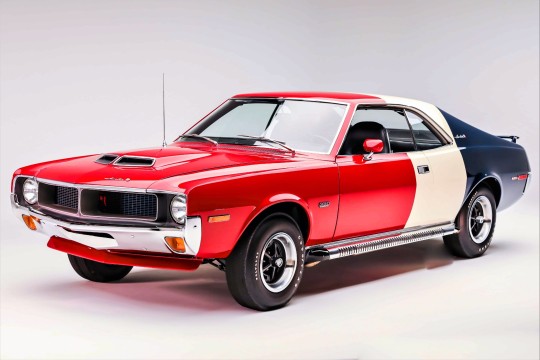
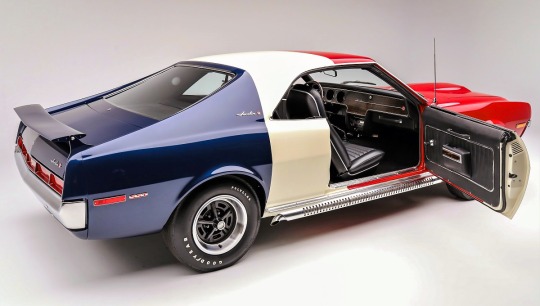
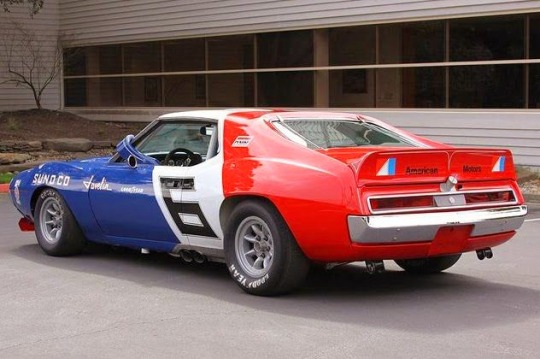
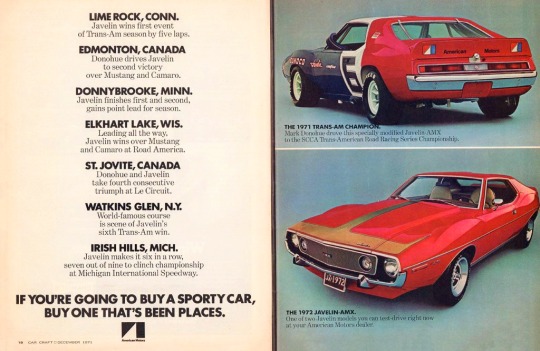
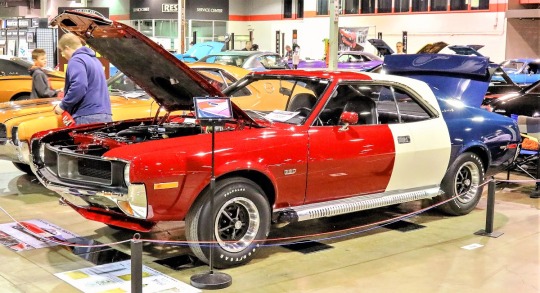
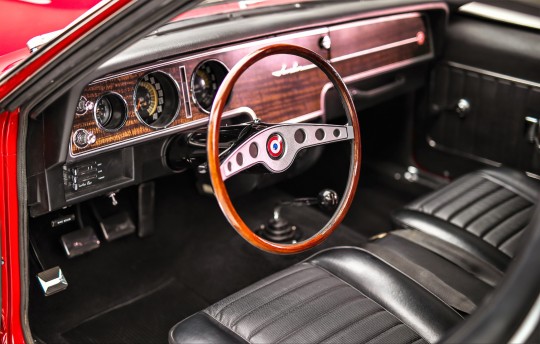
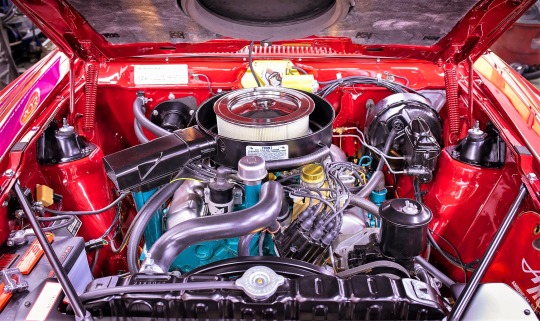
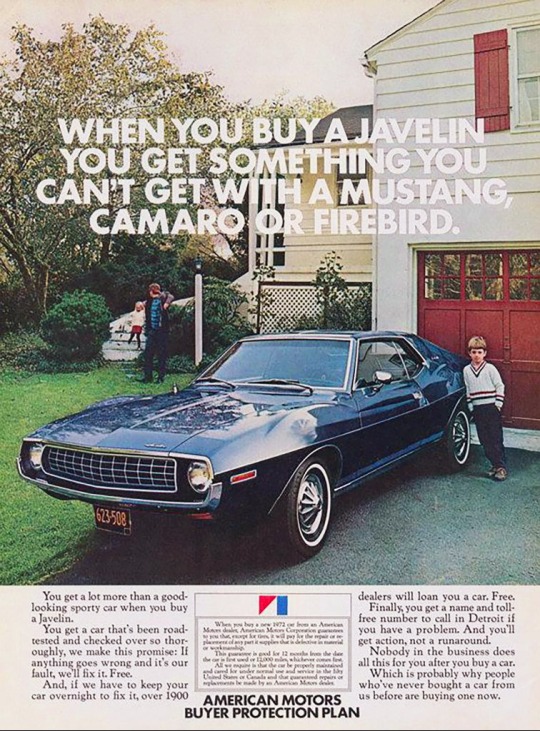
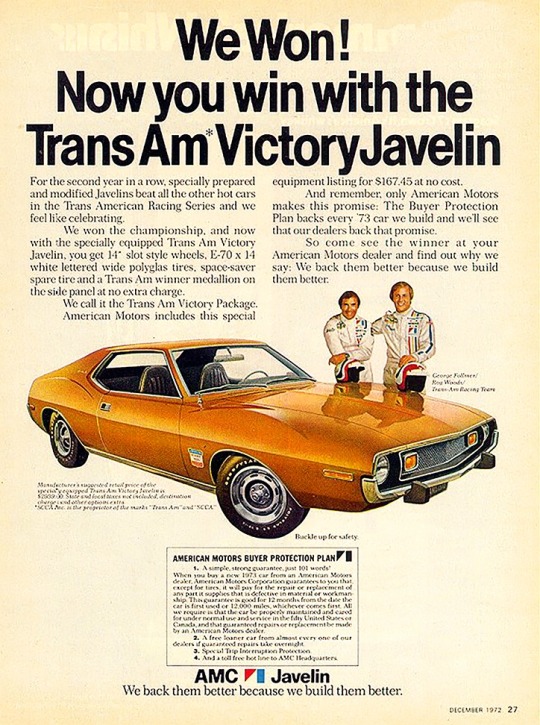

🇺🇲 Step back in time and experience the roar of the iconic AMC Javelin, a true legend of American muscle cars! Introduced in 1967 by American Motors Corporation (AMC), the Javelin was a front-engine, rear-wheel-drive, two-door hardtop automobile manufactured across two generations, spanning from 1968 through 1970 and then from 1971 through 1974 model years. It was designed to compete in the pony car market segment against rivals like the Ford Mustang and Chevrolet Camaro.
🚗💨 The AMC Javelin burst onto the scene in 1968, showcasing a sleek design and powerful engines. Styled by Dick Teague, the Javelin offered a range of trim and engine levels, from economical pony car variants to high-performance muscle car models. Its distinctive appearance, featuring a long hood and aggressive stance, turned heads on the streets and racetracks alike.
🏭 Besides being manufactured in Kenosha, Wisconsin, Javelins were also assembled under license in Germany, Mexico, the Philippines, Venezuela, and Australia, showcasing its global reach. American Motors even offered discounts to U.S. military personnel, leading to many Javelins being exported overseas.
🛞 Under the hood, the Javelin packed serious power. It was available with inline-six engines or potent V8s, delivering thrilling acceleration and speed. The AMX variant, equipped with a 6.4-liter V8, boasted over 300 horsepower!
🏆 The AMC Javelin wasn't just about looks—it excelled on the track too. It competed in Trans-Am racing, demonstrating its speed and agility. In fact, the second-generation AMX variant was the first pony car used as a standard vehicle for highway police car duties by an American law enforcement agency. Today, the Javelin's unique style and racing heritage make it a sought-after classic among collectors.
💔 By 1974, the automobile landscape had shifted. While other manufacturers downsized engines in response to changing market demands and fuel shortages, the Javelin's big engine option continued until production ceased in November 1974 amidst the Arab oil embargo and declining interest in high-performance vehicles.
🦅 The AMC Javelin embodies the spirit of American muscle cars, blending style, performance, and affordability. It's a timeless classic that continues to capture the hearts of car enthusiasts everywhere. Get ready to hit the road and experience the thrill of the AMC Javelin!
#brits and yanks on wheels#retro cars#transatlantic torque#vehicle#cars#old cars#brands#companies#automobile#american cars#amc#american motors#american muscle#amc javelin#javelin#muscle car#pony car#race car#trans am#old car#classic cars#car#american auto#automotive#chevrolet camaro#chrysler#wisconsin#kenosha#made in usa#ford mustang
305 notes
·
View notes
Text
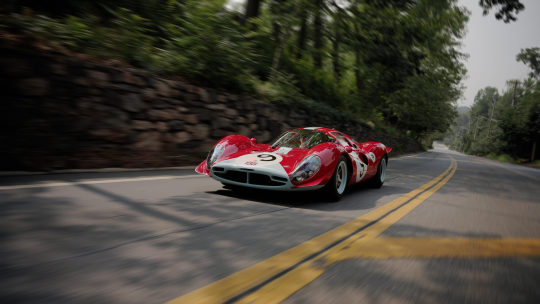
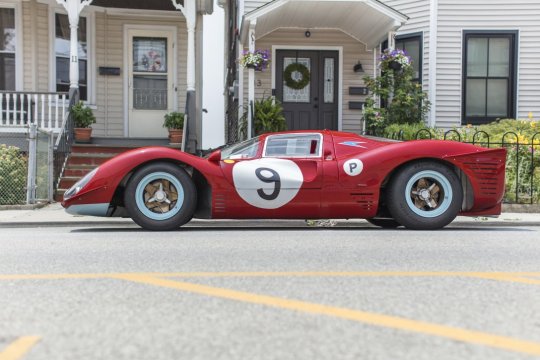
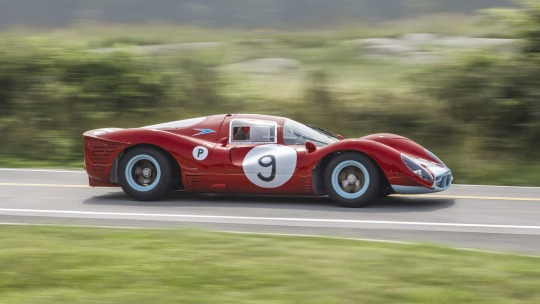
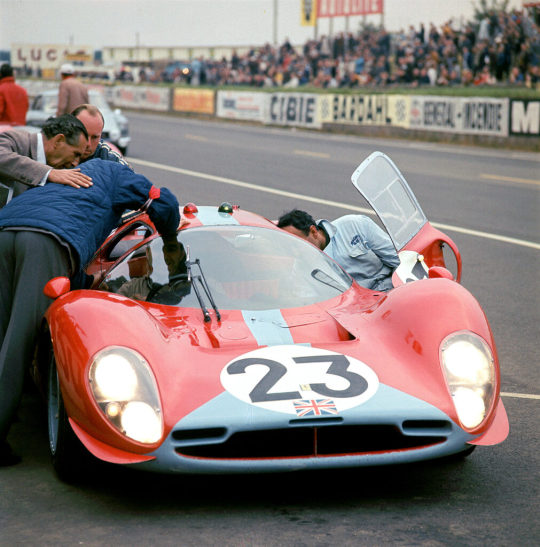
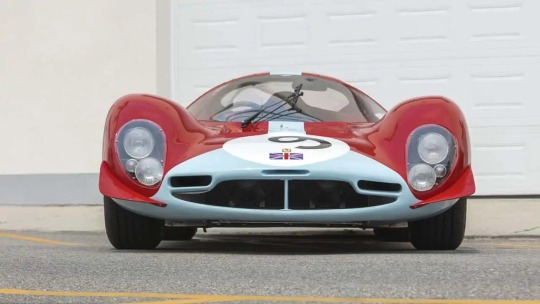
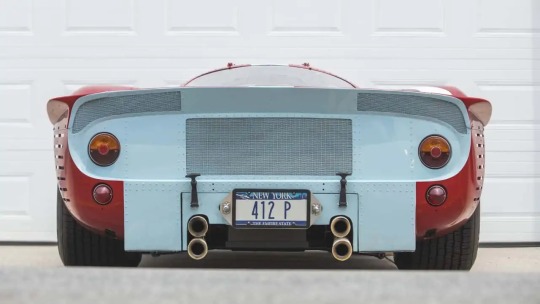

1967 Ferrari 412P Berlinetta
Ferrari built the 412P at the height of its Le Mans rivalry with Ford. Only four examples were ever manufactured, each built to the spec of the private teams that would race them. All were converted from 330 P3 race cars and of the four, two were built for NART and Scuderia Filipinetti while the other two were commissioned by Ecurie Francorchamps and Maranello Concessionaries.
This 412P was raced by Maranello Concessionaries. While it did not claim any race victories during its debut season, it did finish third at Spa and was running just outside the top 10 at the 24 Hours of Le Mans before it retired due to an oil pump failure.
In 1968, the car was sold, repainted green and raced in both Europe and South Africa. It retired from racing later that year before being sold to a U.S. resident who converted it into a street car.
The car then passed through the hands of multiple owners over the following decades and has been in the possession of its current custodian since 2005. It remains road legal and registered and has a numbers matching chassis, engine, transmission, and all of its original bodywork.
Courtesy Bonhams
#art#design#supercars#luxurycars#supercar#luxurylifestyle#luxurycar#hypercars#hypercar#ferrari#berlinetta#bonhams#le mans#racecar#race car#racing#1967#ferrari 412P
210 notes
·
View notes
Note
what do you think about formula e seemingly wanting to replace all of their street circuits in the calendar with permanent tracks? it feels like it’s starting to lose its street circuit racing identity already (and, that’s more of a personal opinion, but the permanent track racing feels like it has been much worse, it just doesn’t suit formula e cars at all)
it's very odd, at a point when F1 can't stop adding street tracks specifically to get hype venues and big-ticket promotional races, Formula E is hiding itself further and further away in permanent circuits.
they're sort of doing it for the same reasons, is the funny thing. little circuits will host FE much cheaper than the immense cost and logistics of building a street track and the lower the bill, the bigger likelihood a local business or tourist board will foot it. for F1, the cost of building a new, permanent facility is so staggering even oil states would likely baulk at it now. Yas Marina has cost over $1.3 billion so far, which Abu Dhabi can foot but isn't small change even for them and has led to other programmes being focussed around re-using and extracting value from the facility. (like the autonomous racing thing I was at earlier this year)
not that street tracks come much cheaper but you can build them faster, for an instant gratification on that investment.
F1 can boast massive figures for what a city stands to gain for hosting a grand prix. $449 million additional spending for Miami, for instance. Formula E... cannot throw around those numbers. it's not really a tourism draw and personnel are limited. so to go to a facility that desperately needs events, with an audience reliant primarily on local interest, means it can show an impact. FE claims that it brought an $84 million boost to the Hyderabad economy, for instance but a lot of that will have been in circuit construction.
so the financials add up. but also FE is supposed to be its own, distinct, world championship with a high profile not "F1 but it's electric and goes to lower grade circuits."
if a series does not have a profile of sufficient size, it has no hope of selling out venues. this happened to F1 - Silverstone didn't use to sell out at all, you could walk up to the gate and buy a ticket and I'm talking, like, 2016 not 1994. it took a long pathway of turning its visibility around to reverse that and yes they hit lightning in a bottle with DTS during lockdown but even things like social media had been a huge start in undoing a long, regressive slide into an ageing, shrinking fanbase.
FE cannot be small. manufacturers like Porsche are not in it for it to be small - yes, it is a useful test laboratory for regen but with long periods of homologation for powertrains, the marketing has to be a significant part of the draw. and you also need, reasonably, to be able to succeed: a manufacturer's board will not keep signing off on a racing budget, however small, if there are no or frustrating results on track. and no marketing function.
I know I've been saying this for years but it's still true: FE needs to keep developing itself, keep acting like a startup (since it is one) and continue to grow. ever since COVID it feels as though the championship just said "ah well, this is what we are now" and decided it wouldn't try to progress anything any further. it's a very odd lack of ambition for what could be such a hugely important series both to OEMs and fans.
24 notes
·
View notes
Text
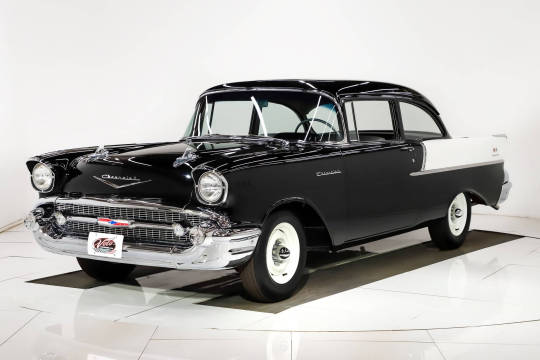
1957 Chevy
The Legendary “Black Widow” 1957 Chevy: A Piece of Racing History
When it comes to legendary cars, the 1957 Chevrolet, also known as the “Black Widow,” holds a special place in the hearts of car enthusiasts. However, few people know the intriguing story behind this iconic vehicle. In this article, we will take you on a journey through time and explore the fascinating history of the Black Widow.
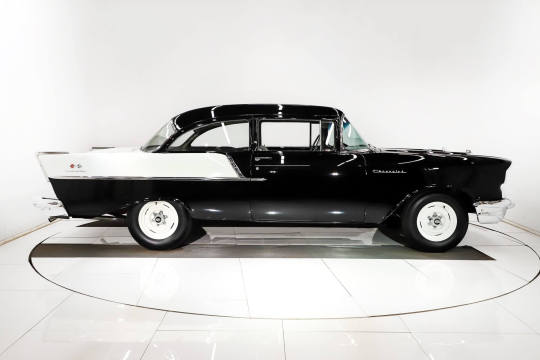
The Secret Support Behind the Scenes
In the 1950s, car manufacturers were prohibited from directly promoting racing. Nevertheless, behind closed doors, Chevrolet found a way to support the racing community. They collaborated with a company called SEDCO to build a limited number of race-ready 1957 Chevys. Only 18 of these incredible vehicles were ever produced.
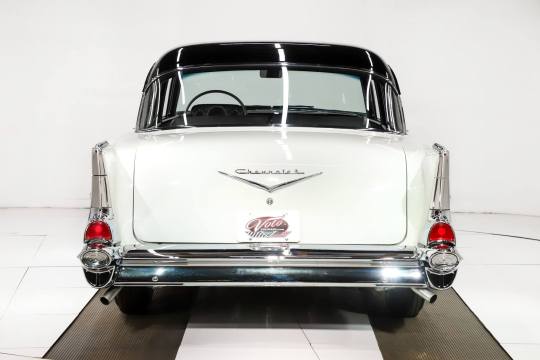
Unleashing the Beast
To create the ultimate racing machine, Chevrolet started with the lightest model available, the no-frills 150 utility sedan. They then equipped these cars with high-performance drivelines that would leave their competitors in awe. The Black Widows proved to be astonishingly fast, setting records and securing multiple victories on the track.
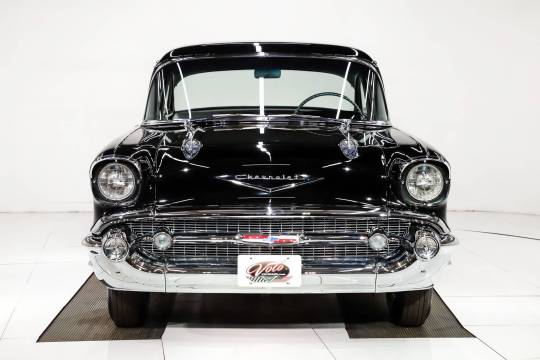
Restoring the Legend
One particular Black Widow has undergone an extensive body-off-frame restoration, meticulously recreating its original glory. The attention to detail is impeccable, resulting in a pristine body that is arguably even better than when it first rolled off the factory floor.
Exquisite Exterior
Painted in the iconic Black Widow colors of Onyx Black and India Ivory, the exterior of this restored beauty is nothing short of breathtaking. Every panel is laser straight, and the gaps are precise. There isn’t a hint of rust or damage to be found. The flawless paint job has been polished to a mirror-like finish, allowing you to see your own reflection. It’s like holding history in your hands.
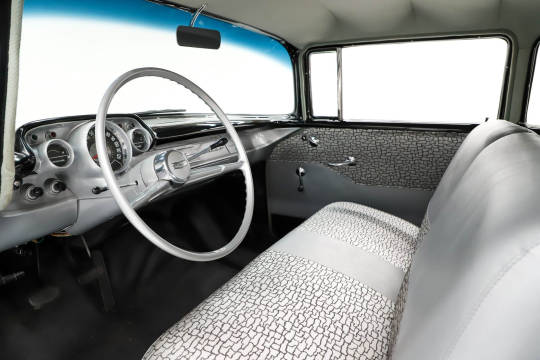
Interior Simplicity
Inside the Black Widow, you’ll find a minimalist design that emphasizes performance over luxury. There are no frills, not even a back seat! The rear windows are stationary, and amenities such as armrests, visors, and even a dome light are absent. However, this simplicity only adds to the car’s authenticity and racing pedigree.
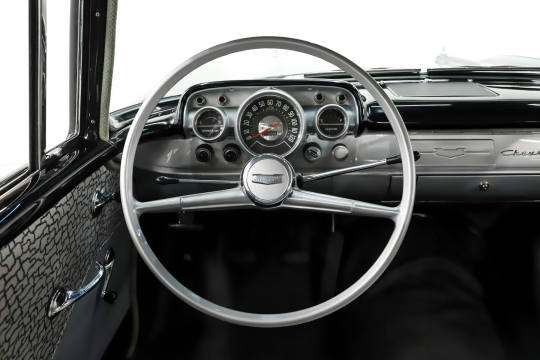
Attention to Detail
No aspect of the Black Widow’s restoration has been overlooked, including the trunk compartment. Painted in glossy white, it exudes cleanliness and attention to detail. A reproduction mat, seat divider, and weatherstrip have been added to complete the authentic look. Even the spare tire matches the original style with its 6 lug pattern and reproduction Firestone tire.
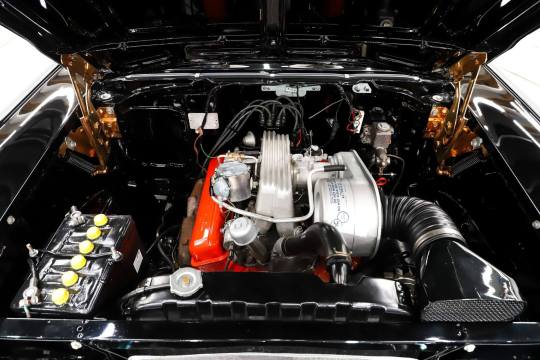
The Heart of a Champion
Under the hood lies a highly detailed engine compartment that exemplifies show-quality craftsmanship. The 283 cubic-inch V8 engine has been built to its original 283 horsepower specifications, complete with a correct factory fuel injection setup. Not only does it look stunning, but it also performs flawlessly. With a responsive throttle and a distinctive idle, this powerhouse truly embodies the spirit of a race car.
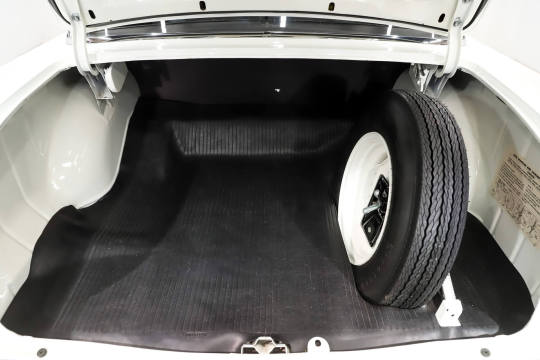
A Masterpiece Underneath
The detailed restoration extends to the underside of the car as well. The chassis has been meticulously prepped and painted in a smooth gloss black finish. Every component has been rebuilt, replaced, restored, and detailed to match the original specifications. The Black Widow features front and rear sway bars, as well as the unique duplication of two shocks at each rear wheel for enhanced performance.
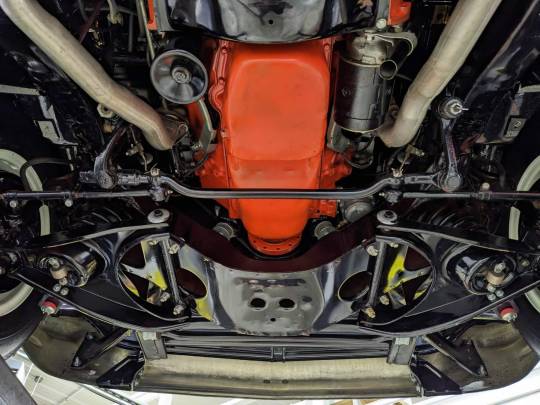
A True Muscle Car
With its completely rebuilt brake system, all-new fuel system, and Flowmaster dual exhaust, this Black Widow not only looks and sounds like a classic muscle car but also performs like one. The spotless Chevy Orange engine block, lower plug wire shielding, canister-type oil filter, restored starter, and dated 1957 transmission all contribute to creating an authentic driving experience. The floors, braces, and rockers have been meticulously restored to their original factory red oxide primer finish.
101 notes
·
View notes
Text
yall who do u think each cars character would be if they took the role of a Disney villain?
here’s my opinion as of now:
@champmorado @alaztortarrant28 @x0stormie0x
while those like gaston and hades might fit him, I also have another proposition (since I also think francesco would be gaston and chick hicks would be hades).
lightning as the evil queen.

like hear me out
Instead of being obsessed with being the fairest in the land, he’s obsessed with being the FASTEST in the land.
What if we took the self discovering and maturing journey lightning had to realize that his place was now to help cruz become a better racer just like doc did with him and flipped it on its head?
Instead of being proud of cruz as her new mentor with how much she’s growing as a racer and accepting that, while he still will race, he’s not the best of the field anymore, he becomes increasingly jealous of anyone who surpasses him and immediately takes action, which means killing them. I’m imagining this more on a fantasy au but this can also apply somehow to the canon of the cars universe.
Lightning is absolutely terrified of becoming even slightly slower. He needs to be the fastest or he’s done for, it doesn’t matter that he’s the literal ruler of an entire kingdom. If someone surpasses him, to him, it’s the destruction of his entire stability and self esteem. Of course this has rarely happened, and when it did, they were instantly taken care of thanks to his huntsman MATER and his efficiency with his tasks.
He sees the potential in Cruz and decides to do all he can try and quash it: limit her surroundings, giving her poorly manufactured oil (or something), anything to make her chances of becoming faster than him absolutely impossible.
But it’s inevitable. When he asks his mirror (which doc is inside btw) who the fastest is, he answers that it’s Cruz. Outraged, he immediately orders mater to kill her and bring her engine as proof that the deed had been committed. Mater is more hesitant to do this but lightning reminds him of the consequences if he fails. And it happens, kind of. You know how the story goes.
When lightning learns that she isn’t dead, he transforms into a weaker, rustier car to try and look like a “lemon” and trick cruz. Of course, that never works out for the evil queen in the end, no matter who it is.

I might sound cringe here but hear me out guys hear me out
#cars movie#cars pixar#pixar cars#cars 3#cars 3 (2017)#cars 2006#cars fandom#lightning mcqueen#cruz ramirez#tow mater#disney cars#doc hudson#mater cars#thinking of the rest of radiator springs acting as the seven dwarfs#evil au#chick hicks#francesco bernoulli#the evil queen#queen grimhilde#snow white#snow white au#disney au#cars au#disney villains
42 notes
·
View notes
Text
MTV Era Motorcity Masterpost (+ NEVER BEFORE SEEN INFORMATION)
In 2000, Chris Prynoski pitched a cartoon called Motorcity.
He made a card and a website promoting the show, which wouldn't see the light of day until the Walt Disney Company got their hands on it.
THE SETUP
"MotorCity is The Dukes of Hazzard meets Akira. It's American Graffiti and Big Daddy Roth rumbling with 8 cylinders into the world of Sci-Fi. It's the heart of American car culture driven to the next level."
"Sex, cars, Rock & Roll, and the freedom to wrap your ride around a tree trunk goin' 160."
"In the near future, concerns over global warming, pollution, and the ever-worsening problem of gridlock in America’s major cities brings about the Anti-Combustion Acts of 2009." "These laws banned the use of any vehicle powered by an internal combustion engine. At first there was a lot of vocal opposition. But the so-called "Digital Revolution" as well as the advent of amazing new transportation technologies neatly filled the void, and the benefits of an improved environment along with a safer, faster and more efficient means of getting from point A to B managed to win even the staunchest opponents over. The oil companies and car manufacturers were forced to shut down under the political and economic pressures." "And a new era was born. Cleaner, faster and safer. America’s cities became modern utopias where its citizens could travel without fear or hazard in comfortable flying boxes affectionately known as "living rooms", and Detroit (The Renaissance City), became the finest example of this new policy. But with all of this wondrous innovation, something was lost. Something inherent in the soul of old America, something called freedom. The freedom to go anywhere. Anyhow. As fast, or as slow as you want. The freedom to speed. And the freedom to die." "This is where our characters come in. A few radicals realized that although you might never die in the "living rooms" , you’ll never really live in them either. So in the "Live fast and die young" mind-set, they fight the law. Scavenging parts and gas from Detroit’s massive underground, Mike Chilton and his gang, as well as a few others are trying to recapture some of what it meant to risk all for the freedom of speed."
THE CHARACTERS
Mike Chilton: A young talent on the illegal race circuit. Mike's right leg is always twitching and itching to jam a gas pedal to the floorboards, and his foot is as lead as they come. He's got gasoline surging through his veins and a 450 horsepower soul. His heart burns to drive and it's all he can do to keep moving faster and faster so that the flames don't consume him. He might be a gangly 19-year-old kid, but his ride has as much muscle as he'll ever need and he knows how to use it.
Vehicle of choice: Retrofitted '77 Trans Am
Julie Capulsky: An Anthropology student with a quick mind and a quicker pulse. She's a city girl with a passion for adventure who's secretly writing a paper on the underground "Burner" culture. As she gets to know Mike and his crew, she feels the freedom of the road and learns the power of a rumbling big block at her command. She is torn between the high performance life of a Gearhead and the love of her father who has sworn to take them down.
Vehicle of Choice: Any Hot Rod that'll give her a ride.
Lt. Capulsky: Julie's Dad and head of Detroit's Anti-Combustion Enforcement Division. He's old enough to remember when the highways were the arteries of America and the drivers were its blood. He rode with Fast Eddy in his youth and understands the joy of inhaling the fumes of burning rubber as the hot road turns his tires to black jelly. He's forced to deal with enforcing a law he's not sure he believes in. But that doesn't stop him from holding the record for the most illegal auto busts in the state of Michigan.
Vehicle of choice: Police "Living Room"
Ed Pirelli: (Fast Eddy) The old-timer who serves as Mike and the crew's link to the past, as well as their guide for the future. A wrecked hulk of a man, Eddy lived in a time when America was the land of wide-open spaces, and you had the liberty to go where, when and how you wanted to travel. You had the freedom to live, and the freedom to die. None of those damn boxes.
Vehicle of choice: Retrofitted '58 Chevy Roadster
Greg Raden: This young cop looks up to Lt. Capulsky as his ultimate hero. Born after the Anti-Combustion Act, He doesn't understand the rush of a vibrating steering wheel responding to every reflex of your sweaty palms. He wants nothing more than to grind the gears of the "Burners" to a halt.
Vehicle of choice: Police "Living Room"
Dave Earnhardt: Mike's worthy rival on the race circuit. He's a speed demon who stops at nothing to win. He might be Mike's worst enemy on the tar, but he'd take a speeding bullet for him off the track.
Vehicle of choice: Retrofitted '69 Camaro RS
Holly Biscayne: A fellow "Burner" who has a thing for Mike. She's jealous and suspicious of Julie's big city motives. She wants to make sure that when the checkered flag waves, she'll be on top.
Vehicle of choice: Retrofitted '05 Jaguar convertible
Brute Conklin: The bastard child of internal combustion and computer technology. This crafty gearhead beats "The Man" at his own game with a never-ending digital assault on the computers that control the Global Satellite System.
Vehicle of choice: Chopped 98' Harley Pan-head
Claire Constance: This ice queen might look like a hot number, but she's really a wet blanket who tries to smother her best friend Julie's fire. She can't understand what's with risking your life in the "sewers" when you can be shopping in style in the safety and comfort of your own clean home.
Vehicle of choice: None if she can help it

Promo card released in 2000

Concept art made shortly after the trailer (ones that closely resemble the final show)
From left to right: Luv (Dutch), Holly Biscayne, Chuck, Mike Chilton, Julie Kapulsky, Claire Constance, Texas, Greg Raden (Tooley), Lt Kapulsky (Abraham Kane), and The Mayor of Detroit
youtube
Pitch Trailer
#motorcity#mike chilton#waksworldrebooted#chuck motorcity#dutch gordy#texas motorcity#julie kane#waksworldart#holly motorcity#Youtube
48 notes
·
View notes
Text
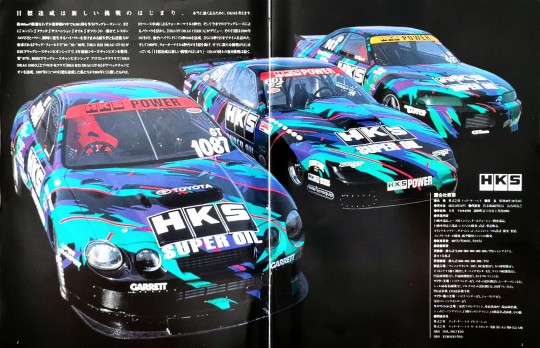
Achieving a goal is the beginning of a new challenge. To run really fast, HKS thinks.
A drag race scene where people compete for 0.001 seconds over a distance of about 400 meters in just a few seconds. '91 is a drag field that demands quick response and power from the engine, clutch, suspension, and even a single drop of oil or gasoline, as well as durability and transmission ability to handle instantaneous high power. -In '95-'96, the ``HKS R32 DRAG GT-R'' won the series championship in the RRC Drag Race Championship for three consecutive years. The following year, in 1997, the ``HKS DRAG 180SX'' in the BERC Drag Race Championship Pro Stock class and the ``HKS R33 DRAG GT-R'' in the Pro GT-R class achieved the Avec Championship. Having achieved one goal in 1997, what we aimed for in 1998 is:
Quarter mile time in 9 seconds with FF base vehicle. They then talked about their know-how from drag racing to date, and ``HKS FF DRAG CELICA'' made its debut. The first goal was achieved on October 9, 1998 at Sendai Highlands with a time of 9.886 seconds. He further improved his time to 9.727 seconds, and in 1999 he set a goal of breaking the quarter mile in the 6-second range, and has already begun a new challenge. "Achieving a goal is the beginning of a new challenge" - HKS' never-ending battle continues
HKS
■Company overview
●Name HKS Co., Ltd. Established October 31, 1971
●Capital 607,475/Kawa Representative Director and President Naruyuki Hasegawa
●Location Head Office 2266 Kamiogawa, Kunikami City, 418-0192
●Business details
Development, design, and product sales of automobile parts, racing engines, turbocharger-related parts, and automotive components and systems Design, development, and manufacturing of original mufflers, suspensions, and engine parts Development of complete cars, development of aircraft engines
●Number of employees: 407 (333%, 74 women)
●Equipment overview
Experiment building: Dynamometer (1,000/800/600~300/200/PS) Chassis dynamo, exhaust gas analyzer
Old experimental building: Dynamometer (600/600-500-200/PS)
Manufacturing factory: 10ft machining center, 5 NC lathes, 41 cam polishing machines, 21 biston narai, 11 turning centers, 21 crank Kenjoshi, Monzen Kendanmei, 21 surface grinders, 1 gun drill machine.
Muffler factory: Pipe bender, robot welding machine, 1 laser machine, shell machine, multi-spot welding machine 11, 100T press, TIG welding machine, CO2 welding machine multi-stage
Muffler 2nd factory: Pipe bender / shirring / Yasuda machining center 1 piece
Suspension factory: Cold solid coiling machine, continuous coiling machine, surface grinding machine, shot peening machine, automatic setting machine, automatic load testing machine, etc.
●Affiliated companies
HKS Aviation Co., Ltd. HKS Service Center (Tokyo/West/Kyu)
HKS USA, INC (USA)
HKS EUROPE()
25 notes
·
View notes
Photo
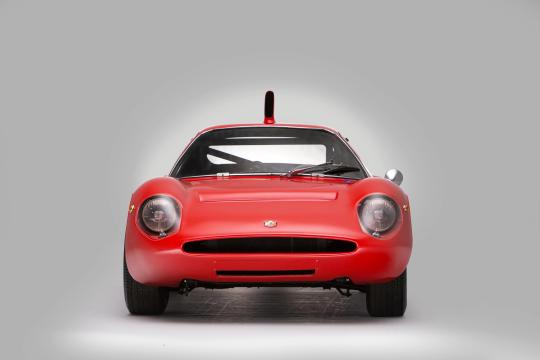
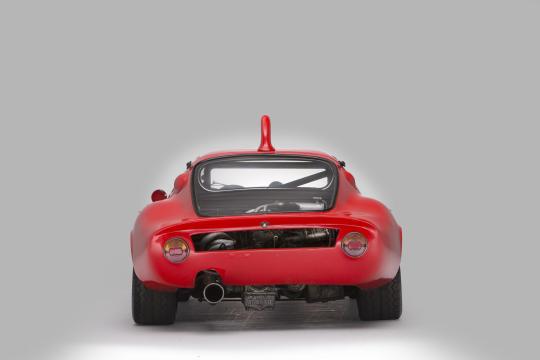
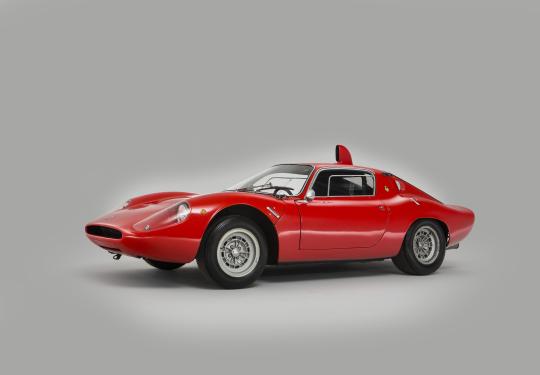
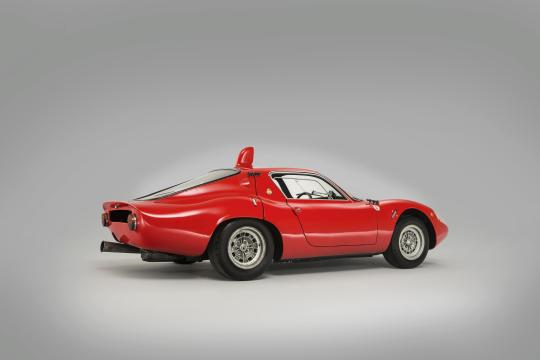
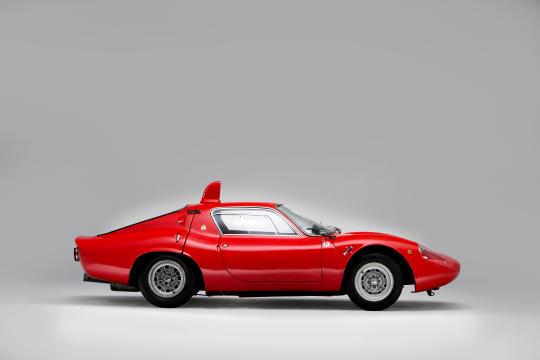
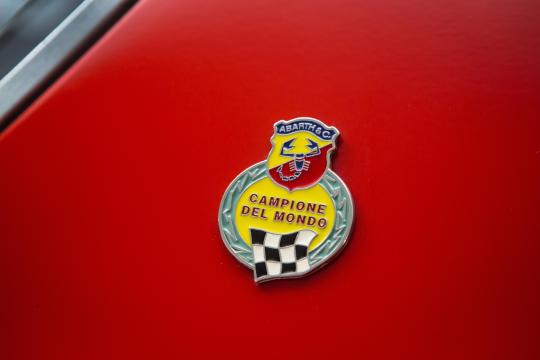
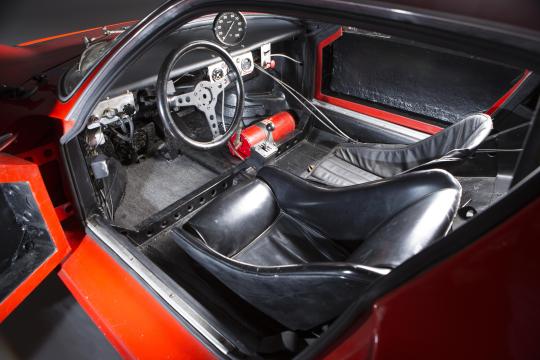
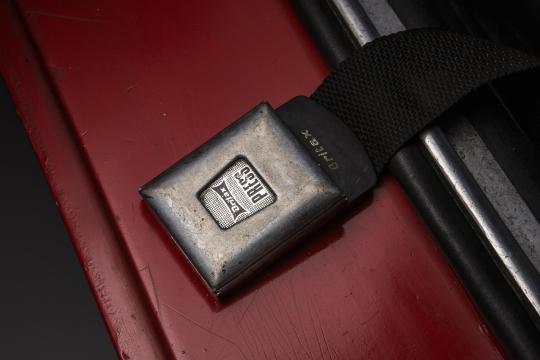


Abarth 1300OT Periscopica Coupé
In 1958, the American Chrysler Corporation pursued an entry into the European motor manufacturing market by buying 15 per cent of the French Simca company's stock from Ford. At that time, however, the dominant shareholder remained Fiat of Turin, and their influence remained distinctively apparent in the engineering and design of Simca cars for several years into the early 1960s. However, in 1963 Chrysler increased its Simca stake to a controlling 64 per cent by purchasing stock from Fiat, subsequently extending that holding to 77 per cent.
Chrysler had no interest in any continuation of the previously successful Simca Abarth and Abarth Simca high-performance car collaboration, which came to a juddering halt. In Turin Carlo Abarth found himself left more or less high and dry, but the supply of basically Simca 1000 chassis floor pans, upon which the sleek and superfast Abarth Simca 1600s and 2000s had been based, left quite a number in stock, as yet unused. The popular legend is that it was upon these unused Simca platforms that Abarth then founded his 1300cc class Gran Turismo design for 1965 – the OT 1300. Abarth's technical team under Mario Colucci had developed a boxed pressed-steel chassis structure on the modified Simca 1000 floor pan to which allindependent suspension was attached with componentry drawn from the Fiat 850 shelves. The Abarth OT 1300 then emerged, to race for the first time as a prototype in the September, 1965, Nurburgring 500-Kilometre classic.
Driver Klaus Steinmetz hammered the new Coupé home to a fine third-place finish overall and the OT 1300 was up and running into the record books, becoming one of the most successful – and also one of the most distinctive – models that Abarth & C ever produced. The OT 1300's rear-mounted all-Abarth engine was overhung – in best Carlo Abarth-approved style. It was a 4-cylinder unit with twin overhead camshaft cylinder head, using a block with cylinder bore and stroke dimensions of 86mm x 55.5mm to displace 1289cc.
With two valves per cylinder and a 10.5:1 compression ratio, the engine breathed through two twin-choke Weber 45DCOE9 carburettors. Ignition was by two plugs per cylinder, fired by single distributor. Dry-sump lubrication was adopted and the power unit produced a reliable 147bhp at 8,800rpm. This lusty engine, perfected by Abarth's power-unit specialist Luciano Fochi with five main-bearing crankshaft, drove via a five-speed and reverse Abarth transaxle.
Wheelbase length of the OT 1300 was nominally 2015mm, front track 1296mm and rear track 1340mm. It featured moulded glassfibre clamshell-style opening front and rear body sections moulded by Sibona & Basano in Turin, and this pert-nosed Coupé became a familiar sight dominating its class for three consecutive years. Production of the OT 1300 began on May 15 1966 and ended on March 30, 1966, by which time the minimum production number of 50 required by the FIA for homologation as a Gran Turismo model had (allegedly) been achieved. The most distinctive single characteristic of the OT 1300 Coupé, apart from its huge International success within its class, was its adoption of the Periscopica air-cooling intake on the rear of the cabin roof. Casual onlookers would assume that the periscopelike intake fed intake air into the rear-mounted engine, but this is absolutely not the case. Instead, the water and oil-cooling pipe runs through the cockpit area heated-up the cabin to what was generally considered to be an unacceptable level for endurance racing, and the periscope intake merely blasted cold air down into the cabin to cool the driver himself...
From the OT 1300 Mario Colucci developed the OT 2000 Coupé using the 1946cc 4-cylinder power unit perfected by his colleague Luciano Fochi and with some 215bhp at 7,600rpm that largerengined model was capable of exceeding 165mph in a straight line. In fact all these Abarths with their sleek aerodynamic bodies and light weight really were exceedingly rapid by the standards of the time and within their respective capacity classes.
100 notes
·
View notes
Text
Ford Mustang
Second Generation (1973-1978)



Iacocca, creator of the first Mustang, became president of the Ford Motor Company in 1979 and ordered that the new Mustang be smaller and more efficient. It was initially supposed to be based on the Ford Maverick, but was later made by the Ford Pinto.
The new model, called "Mustang II", was introduced on September 21, 1973, two months before the first oil crisis of 1973, and its small size allowed it to compete with Japanese imported sports coupes such as the Datsun 240Z and Toyota Celica. It was produced until 1978.

At the end of 1973, coinciding with the energy crisis that occurred that year, the Mustang II was introduced, a car that was short-lived but which won Ford another award as car of the year . This model brought the Mustang back to the 1964 model in size, shape and overall styling. The car proved to be smaller than previous models as well as slower and heavier even though the company placed great emphasis on the quality of its finishing, which was defined as the highest ever made in the US automotive industry. Regarding dimensions, the Mustang II was 50 cm shorter, 10 cm narrower and 2.5 cm lower than the previous version.
The Mustang II was available in a 3-door hardtop body style. The basic version was equipped with a 2.3 liter (146 in3) inline four-cylinder engine with a single overhead camshaft. This engine was the first to be built using the metric system instead of the American measurement system. The 2.8-litre V6 (170in3), produced in Europe for the Capri, was available as an option. This meant that the V8 engine disappeared, albeit only for 1974, from the Mustang range. This absence was subject to several criticisms from fans of the car who wrote many letters to trade magazines.
Ford reintroduced the V8 engine with the 1975 model year but since the car was not designed to accommodate a similar engine it was necessary to proceed with a significant redesign of the vehicle. The basic model from which to create the Mustang II was the Ford Pinto. The engine chosen was the 4.9 liter (302in3) V8.

In 1976 the special version Cobra II was launched. This car was inspired by the Shelby Mustang, and for this reason it was equipped with a large air intake on the hood, the Shelby emblem on the radiator grille, a rear spoiler and racing stripes in different shades. Only the appearance was sporty, as the engine was within the standards of the Mustang II.
In any case, the car was a good commercial success and 400,000 examples were produced in the first year. The success was due more than to the innovations introduced to the fact that this model was able to regain the affection of the public as had happened with the 1964 model.
Even the oil crisis, which practically eliminated the most powerful range of cars from the price lists of almost all car manufacturers, did not interrupt the success of the Mustang II.
#ford mustang#mustang#ford shelby#Ford Mustang ‘70#mustang second generation#fast cars#vintage#vintage cars
7 notes
·
View notes
Text
Alaska: Igloo, Kodiak bear, Iditarod sled dog race, Denali
Hawaii: pearl harbor, pineapple
washington: Space Needle, apple, mt st helens, rainier national park
oregon: roses, lighthouse, crater lake, oregon trail, hiking
california: redwood tree, white water rafting, gold, golden gate bridge, silicon valley, yosemite national park, wine country, sierra nevada mountains, hollywood, joshua tree
nevada: silver, las vegas strip, hoover dam
idaho: gemstones, potatoes
montana: rocky mountains, glacier national park, grizzly bear, bison
wyoming: yellowstone national park, old faithful geyser, bucking bronco
utah: great salt lake, zion national park, skiing
arizona: lake mead, grand canyon national park, montezuma castle, turquoise, saguaro cactus
new mexico: pueblo, yucca plant, carlsbad caverns
colorado: rocky mountain national park, columbine flower, elk
north dakota: oil, wind energy
south dakota: crazy horse memorial, the badlands, mount rushmore
nebraska: chimney rock, bald eagle, train
kansas: tornadoes, dodge city, sunflower
oklahoma: tomato, wheat, osage shield
texas: cattle, prickly pear cactus, oil refinery, the alamo, NASA Johnson space Center
Minnesota: lake of the woods, wolf, deer
iowa: prairie grass, corn
missouri; Hog, gateway arch
arkansas: razorback hog, banjo
louisiana: crayfish, mardi gras, jazz music
wisconsin: dairy
illinois: Willis tower, tractor, lincoln
michigan: copper, iron ore, automobile manufacturing, motown
indiana: Car
ohio: Rock and Roll Hall of Fame, tires
pennsylvania: street mill, liberty bell
new jersey: constitution
maryland: blue crab
virginia: mount vernon
north carolina: wright brothers national memorial, tobacco farm, great smoky mountains national park, appalachian mountains
south carolina: fort sumter
georgia: peanuts, peach
florida: oranges, kennedy space center, alligator, everglades national park
alabama: cotton, civil rights movement
mississippi: magnolia
tennessee: country music
kentucky: horse racing
west virginia: coal
new york: apple tree, financial market, statue of liberty
massachusetts: american revolution
vermont: maple syrup
new hampshire: fall colors
maine: acadia national park, moose, lobster
And don’t make me repeat it!!!!!!!
7 notes
·
View notes
Text
https://crivva.com/article/rofeibis-engine-elixir-ultimate-high-speed-companion/
Embark on the ultimate high-speed journey with our blog: "ROFEIBI’s Engine Elixir: Your Ultimate High-Speed Companion!" 🚗💨 Explore the secrets behind ROFEIBI’s exceptional engine elixir, meticulously crafted to be the perfect companion for high-speed adventures. From maximizing horsepower to reducing friction, this blog unveils the key features that make ROFEIBI a game-changer in the world of automotive excellence. Whether you're a speed enthusiast or a car aficionado, discover how this engine elixir can elevate your driving experience to new heights. Don't miss out on the keys to mastering high-speed performance – read now!
#racing car lubricant oil#racing car lube#racing car gear oil#racing car oil companie#racing car lube oil#racing car oil supplier#automotive oil manufacturer#racing car oil manufacturer#automotive oils and lubricant#best lubricant oil for racing car#racing car engine lubricants#automotive lubricants manufacturer#racing car engine oil manufacturer#racing car engine oil supplier#best gear oil for racing car#automobile racing car oil manufacturer#Automotive Lubricant Solution#high performance racing car engine oil#high performance racing car engine oil manufacturer#high performance racing car engine oil supplier#high performance racing car engine oil dealer
0 notes
Text
The Evolution of Automobiles: A Journey Through Time

Introduction
The history of automobiles is a fascinating tale of innovation, determination, and human ingenuity. From the earliest steam-powered contraptions to the sleek electric vehicles of today, cars have shaped our lives, economies, and landscapes. Let’s embark on a journey through time to explore the milestones, inventors, and revolutions that define the world of automobiles.
1. The Pioneers
a. Nicolas-Joseph Cugnot and the Steam Carriage (1769)
In a small workshop in France, Nicolas-Joseph Cugnot built the first self-propelled vehicle. His steam-powered carriage, known as the “Fardier à vapeur,” could carry passengers and cargo. Although slow and cumbersome, it marked the birth of the automobile.
b. Karl Benz and the Benz Patent-Motorwagen (1886)
Fast-forward to the late 19th century. Karl Benz, a German engineer, unveiled the Benz Patent-Motorwagen. It was the first true automobile powered by an internal combustion engine running on gasoline. With three wheels, a single-cylinder engine, and a top speed of 16 km/h (10 mph), the Motorwagen revolutionized transportation.
2. The Model T Era
a. Henry Ford and the Model T (1908)
Henry Ford’s vision was to make cars accessible to everyone. In 1908, he introduced the Model T, an affordable, mass-produced vehicle. The assembly line revolutionized manufacturing, and soon, millions of Model Ts rolled off the production line. The car became a symbol of progress and freedom.
3. The Roaring Twenties and Streamlined Designs
a. Art Deco and Streamlining
The 1920s witnessed a shift in car design. Art Deco influences brought elegance and symmetry to automobile aesthetics. Streamlining, inspired by aviation, emphasized sleek curves and aerodynamic shapes. Cars like the Chrysler Airflow and the Bugatti Type 57 exemplified this trend.
4. Post-War Boom and Muscle Cars
a. Post-World War II Boom
After World War II, car production soared. Families embraced sedans like the Chevrolet Bel Air and the Ford Fairlane. The 1950s saw tailfins, chrome, and optimism. Drive-in theaters and roadside diners became part of the American dream.
b. Muscle Cars and Horsepower Wars
The 1960s brought muscle cars—powerful, V8-engine beasts. The Ford Mustang, Chevrolet Camaro, and Dodge Charger ruled the streets. The horsepower wars escalated, and drag racing became a cultural phenomenon.
5. Environmental Concerns and Innovations
a. Oil Crisis and Compact Cars
The 1970s oil crisis shifted priorities. Compact cars like the Volkswagen Beetle and Toyota Corolla gained popularity. Fuel efficiency and emissions control became critical.
b. Hybrid and Electric Cars
In the 21st century, environmental awareness led to hybrid and electric vehicles. The Toyota Prius pioneered hybrid technology, while Tesla’s electric cars redefined performance and sustainability.
6. The Road Ahead: Autonomous Vehicles and Beyond
a. Autonomous Driving
Self-driving cars are no longer science fiction. Companies like Waymo and Tesla are pushing the boundaries of autonomy. The future promises safer roads and shared mobility.
b. Sustainability and Beyond
As we move forward, sustainability remains paramount. Hydrogen fuel cells, solar-powered cars, and urban mobility solutions will shape the next chapters in automotive history.
Conclusion
From steam carriages to electric supercars, the automobile’s evolution mirrors our progress as a society. Each turn of the wheel brings new challenges, innovations, and dreams. So, fasten your seatbelt—we’re still on an exhilarating ride
3 notes
·
View notes
Note
Hello you are the first person I've found who also has an abiding fondness for Dick Dastardly! I'd love to hear your thoughts and ideas on him, either in a shipping context or just as the dedicated villainous villain we love.
~goodgriefwhatanerd (the guy you saw gushing over a monster that's just a pile of corpses and gave a little like to, thus cementing you in my heart)
GASP hello fellow DD enjoyer!! It's so rare to see someone else even know who he is, i think I've only ever gotten one? Ask? about him before? A crime.
(also yeah I fully respect the hardcore monster crushing! It was a crime not to at least leave a like, you have excellent taste!)
I'm always torn between writing for DD in his Flying Machines era or the Wacky Races, as I grew up with both. I love the batshit nature of Flying Machines (and personally think being part of the squad would be a scream) but Wacky Races holds a very dear place in my heart, especially becuase in at least one episode Dick actively, knowingly sabotages his own win, which was the only time he was clear to win in the whole series. Can I extrapolate 3 pages worth of character analysis from 10 seconds and a throwaway line? Absolutely!
One thing that always got me about WR is that the racers could actually hear the narrator, and the character with the most interactions with the narrator directly was Dick! Granted he's the protagonist, but he wasn't just reacting, instead actively engaging iin short conversations with the omnipresent voiceover. In universe, this gets me thinking...
...DD's car, the Mean Machine, is legitimately, 1000%, unavoidably, the best car in the entire race. It's faster, more armoured, has a shit ton of tricks and is even the final unlockable car in the WR game, as it's the best there too. Dick is a specacular racer, so there is absolutely no reason he isn't winning every race if he actually tries. And the one time he's set to win, he stops to sign an autograph for Mutley, who is already in his car and could've waited two minutes??! That's the thinnest goddamn excuse I've ever heard.
The racers are either actively aware they're in a broadcasted show, and adding manufactured drama accordingly (Dick is therefore contracted to lose every time via entertaining attempted sabotage, as in it's *in his contract to lose and he agreed to this*) - OR my personal preference, is that of all the racers, Dick is becoming genre aware and is fucking about with the races to see what he can get away with. He's not *fully* 4th wall breaking, but he's noticed that as the entire place runs on looney tunes physics and 1950's morals, he doesn't actually get punished for anything he does besides lose and get flattened. And since the races take place in a time static recurring void with no continuity, he can do this for as long as he pleases.
it might fuck with his anxiety and existential dread for a bit, and since no other racers seem to have figured it out he'd be pretty isolated, but his dog is his best friend anyway and it means he can uproot stop signs, plant acme bombs and plot oil slicks to his hearts content.

it's another crime that I can't find a single gif of his classic 'Drat', so please take this instead.
Best hanna barbera villain ever and classic 1960's version for life.
#thalassa responds#dick dastardly#thanks so much for the ask!!#my god I love this idiot#he's one of my first favourite characters ever and A good chunk of my humour I suspect comes from WR and FM
4 notes
·
View notes
Text
youtube
When Should You Perform Your First Oil Change?
The first oil change for a vehicle is a crucial step in ensuring the longevity and performance of your engine. Whether you own a brand-new car or a freshly rebuilt engine, the initial oil change isn't just a routine task—it’s an essential process for removing contaminants and ensuring the engine operates at peak efficiency.
Here’s what you need to know about why the first oil change is so important, when it should be done, and what best practices to follow.
Why Is the First Oil Change Important?
The first oil change is more than just about swapping out old oil for new—it’s about protecting your engine during its critical break-in period.
1. Removes Break-In Contaminants
During the first few hours of operation, the engine’s internal components—like pistons, cylinders, and bearings—are bedding in. This process creates microscopic metal particles that accumulate in the oil. Left unchecked, these particles can act as abrasives, accelerating wear.
2. Protects Moving Parts
Fresh oil ensures that all internal components are adequately lubricated, reducing friction and preventing premature wear.
3. Maintains Engine Efficiency
Removing debris and ensuring clean oil allows the engine to run more smoothly and efficiently, setting the foundation for long-term performance.
When Should You Perform Your First Oil Change?
The timing of your first oil change depends on whether you’re dealing with a brand-new car, a rebuilt engine, or a performance vehicle. Here’s a general guideline:
1. Brand-New Vehicles
For most new cars, the manufacturer provides a recommended interval for the first oil change, typically between 500 and 1,500 miles. This allows sufficient time for the engine to complete its break-in cycle while ensuring contaminants are flushed out early. There is no need to switch to a break-in oil following whatever fill was in the engine from the factory.
2. Rebuilt or Freshly Built Engines
For engines that have been rebuilt or custom-built, the first oil change should happen much sooner—typically within the first 100 to 200 miles. The break-in process is more critical in these engines, and early oil changes ensure contaminants and debris from assembly and break-in are promptly removed.
3. High-Performance and Track Vehicles
For performance cars or vehicles subjected to track use, the first oil change should be even more frequent, often after just a few hours of operation or 50 to 100 miles. These engines experience higher stresses during break-in, making early maintenance essential.
Best Practices for Your First Oil Change
To ensure you’re getting the most out of your first oil change, follow these best practices:
1. Use High-Quality Oil
For the initial oil fill, use a high-zinc break-in oil, such as those offered by Driven Racing Oil or other specialized brands. These oils contain additives that protect engine components during the break-in period.
2. Replace the Oil Filter
Always replace the oil filter during your first oil change to remove any captured debris. Use a high-quality filter that meets or exceeds OEM specifications. Consider adding a FilterMag oil filter magnet and magnetic drain plug to further improve oil filtration and wear particle detection.
3. Inspect the Oil and Filter
Examine the used oil for metal particles or discoloration, which can indicate excessive wear or contamination. Cut open the oil filter to inspect the pleats for metal shavings.
Consider used oil analysis on the first drain as this should be your metric for the highest wear levels your engine should ever have.
4. Monitor Oil Levels
Check the oil level after the first oil change and periodically during the break-in period to ensure there are no leaks or excessive consumption.
5. Follow Up with Regular Maintenance
After the first oil change, transition to regular maintenance intervals as recommended by the manufacturer or your engine builder. For high-performance engines, consider shorter intervals to maintain peak performance.
The Long-Term Benefits of a Timely First Oil Change
Performing your first oil change at the correct interval sets the stage for your engine’s health and longevity. By removing contaminants and ensuring clean lubrication, you reduce the risk of wear and tear, improve performance, and extend the life of your vehicle.
For more tips on engine maintenance and oil recommendations, visit LN Engineering or consult with your trusted automotive specialist. Protect your investment by starting with the right first steps!
#oil recommendations#oil change#lnengineering#lake speed jr#the motor oil geek#used oil analysis#driven racing oils#Youtube
0 notes
Text
HASEGAWA 1/12 Kawasaki 500SS MachⅢ / Kurusu Naomi #2/end
I worked on this mainly last year, and it ended up being the only completed product last year. Kurusu's Mach.


I made Hasegawa's 1/12 Kawasaki Mach III as the beloved car of Kurusu Naomi, who appears in "Bukkomi no Taku" just like the SR.

The main changes from the original kit are
・Chamber/Manufacturer unknown/3D parts ・Seat/No filling/3D parts ・Front fork/3D parts + aluminum pipe ・Funnel/3D parts ・Magura separate handlebars/Top bridge/3D parts ・Back step/3D parts ・Pillion barless/No blinkers/Bented license plate
Parts by Ragu Nyan Sensei ・Spoke wheels ・Chain

・Chamber: There was no mention of this in the manga version, but the novel said something like "the original was an extremely thick American chamber of unknown manufacturer," so I made it with the manga's atmosphere in mind. The center stand can no longer be attached, so only a side stand is included.

・Seat: There was no specific mention of this in either the manga or novel, but the seat was thin and like it had been hollowed out, so I also made this with the manga's atmosphere in mind. This time, I decided to make as many parts as possible from data, so even though it would have been easier to process it by hand, I decided to make it from data. ・No pillion bar/no turn signal/naughty license plate: After reading the manga and starting to build the kit, I noticed this, but the Kurusu's Mach did not have turn signals. The turn signals were not forgotten, but are simply a specification of the Kurusu's Mach. I used a license plate that I had made from etching and bent it.

・Front fork: As it is called "super short" in the manga, I think it is one of the key features of Kurusu Mach, so I lowered the front until it had a similar feel, and ended up remaking it about 5mm shorter than the one in the kit.
The headlight stay is also different, and I wanted to separate the parts by color, and use aluminum pipes for the front fork, so I made it so that I could do those things.
・Backset: Although there is only one image in the manga, it seems to be in the position of a pillion step, and the shape looked similar, so I managed to make it look similar.

・Magura separate handlebars/top bridge/meter: In the manga, Taku says "Maybe it's a Tomaselli?", but in the novel it turns out to be a Magura taken from the ZRX1100 that he originally rode. While making the separate handlebars and top bridge, I realized that it only had one meter.
I can't tell which one it is in the manga, but racing cars and the like only have a tachometer, so I followed that and made it a tachometer. Accordingly, the speedometer cable that normally comes out of the front wheel has also been removed.

・Funnels/Accessories: I used the funnels I made at the beginning. The keychain is etching, the piping is basically replaced with Tamiya's 0.5mm, and I partially used Hiro's oil tubes.

Above all, the spoke wheels and chain from Ragu Nyan-sensei. These were what made me want to make it and helped me complete it.
Once you start assembling it, you can keep assembling it, and the resolution increases all at once, so it's a really useful part.

That's all for last year's only completed product, Kurusu's Mach.
Thank you.
Please support me in producing the kit. ・Patreon patreon.com/SMC9999
・Buy Me A Coffee https://www.buymeacoffee.com/smc9999
・Ko-fi https://ko-fi.com/smc9999
0 notes